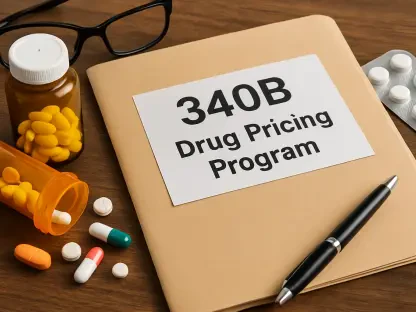As open enrollment for Affordable Care Act (ACA) plans begins, millions of Americans face uncertainty and looming price hikes, with Congress yet to decide on extending critical subsidies. To dive deeper into this pressing issue, I’m speaking with Dr. Emily Harper, a renowned healthcare policy expert with over two decades of experience analyzing insurance marketplaces and the impact of federal legislation on access to care. Dr. Harper has advised policymakers and advocacy groups on the intricacies of the ACA since its inception, offering a unique perspective on how these changes affect both consumers and insurers. In our conversation, we explore the current state of ACA subsidies, the real-world consequences of rising premiums, the challenges faced by families across income levels, and the broader implications of political gridlock on the future of healthcare affordability.
Can you walk us through the current situation with ACA subsidies and why there’s so much uncertainty right now?
I’m happy to break this down. Right now, the enhanced subsidies that were introduced during the pandemic to make ACA plans more affordable are set to expire at the end of this year. These subsidies have been a lifeline for millions, capping premium costs for low- and middle-income families. However, Congress hasn’t reached a consensus on extending them. The deadlock stems from differing priorities—some lawmakers want to maintain or even expand the subsidies, while others are concerned about the fiscal impact, with estimates suggesting a permanent extension could add hundreds of billions to the federal deficit over a decade. Without a decision, consumers are left in limbo as they start shopping for plans, unsure of what they’ll actually pay in 2026.
What could happen if Congress fails to act before the deadline at the end of this year?
If no action is taken by December 31st, the consequences could be severe. We’re looking at premium increases that could more than double for many enrollees, especially those just above the poverty line who’ve relied on this financial help. For instance, a family earning around $129,000 could see their monthly costs for a mid-tier plan jump from under $900 to nearly $1,900. Beyond the individual impact, we could see millions drop coverage altogether—estimates range from 1.5 million to over 7 million uninsured. That’s a massive step backward for access to care, not to mention the strain on emergency services when people can’t afford preventive treatment.
How are these potential cost increases affecting everyday Americans as they navigate open enrollment?
It’s creating a lot of anxiety. People are logging into Healthcare.gov or state exchanges for “window shopping” and seeing sticker shock. For many, especially those with chronic conditions like asthma or endometriosis, going without insurance isn’t an option—they need coverage to manage their health. But when premiums spike, they’re forced to make tough choices, like switching to cheaper plans with high deductibles that might not cover their doctors or medications. I’ve heard stories of individuals weighing whether they can afford both insurance and basic necessities like food or rent. It’s a heartbreaking position to be in.
Can you paint a picture of how these price hikes disproportionately impact low- and middle-income families?
Absolutely. The impact varies widely based on income. For someone earning just over 400% of the federal poverty level—around $64,000 for an individual—they could lose subsidies entirely, meaning they’re suddenly paying full price for a plan that was previously discounted. For those closer to the poverty line, even a small increase in premiums, say from zero to $50 a month, can be devastating. These are families already stretching every dollar, and any added cost forces impossible trade-offs—medication versus groceries, for example. The system’s design means the burden falls heaviest on those least equipped to bear it.
What are you hearing from individuals about how they’re coping with the fear of losing affordable coverage?
The personal stories are really tough. Many are considering going without insurance altogether, even though they know the risks. I’ve spoken with people who are terrified of not being able to see their regular doctors or afford treatments for ongoing health issues. One woman shared that she’s already cutting back on other expenses just to brace for a potential premium hike, but she’s still not sure she can make it work. The emotional toll is huge—people feel trapped between protecting their health and maintaining basic stability in their lives.
How does the delay in congressional action create ripple effects beyond just the consumers?
The longer Congress waits, the more chaos it creates across the system. If a decision comes too late, insurers and state regulators won’t have time to update pricing or messaging on enrollment platforms. That means consumers might make decisions based on outdated or inflated cost estimates, potentially opting out when they could have stayed if subsidies were extended. We could see a significant drop in enrollment numbers—potentially millions fewer insured. For insurers, the uncertainty makes it hard to predict risk pools, which can lead to even higher premiums down the line as they try to cover costs with a smaller, sicker group of enrollees.
Looking back, how have the ACA marketplaces evolved in recent years, especially with these subsidies in play?
The marketplaces have transformed dramatically since 2020. Enrollment has more than doubled, from about 11.4 million to a record 24 million Americans today, largely because of the enhanced subsidies passed in 2021 and extended in 2022. These made plans affordable for a broader range of incomes, drawing in more people and even enticing more insurers to join the exchanges. But now, with the subsidy cliff looming, some insurers are pulling out of certain areas or hiking rates to offset expected losses, especially if healthier, younger enrollees drop coverage. It’s a fragile balance that’s been disrupted by this uncertainty.
What are insurers saying about the challenges they’re facing in this environment?
Insurers are sounding the alarm. They’re worried that if subsidies lapse, younger and healthier individuals will be the first to leave the marketplace, leaving behind a risk pool that’s older and sicker—and much costlier to cover. They’re also dealing with rising operational costs, like higher hospital fees and the expense of covering new, pricey medications. These factors are pushing premiums up, and insurers are caught between trying to stay profitable and keeping plans attractive to consumers. Many are lobbying hard for Congress to act quickly to stabilize the market.
Can you shed light on the political dynamics at play in the debate over extending these subsidies?
It’s a deeply divided issue. On one side, there’s strong support for extending the subsidies as they are, with the argument that they’ve been crucial for expanding access to care. On the other side, there’s concern about the cost to taxpayers, with some proposing stricter income limits or other modifications to reduce the federal burden. The debate is further complicated by broader budgetary standoffs, where progress on this issue is tied to unrelated negotiations. It’s a frustrating gridlock, especially for the millions of Americans waiting for clarity on what their healthcare will cost next year.
What is your forecast for the future of ACA subsidies and marketplace affordability if this stalemate persists?
I’m cautiously optimistic that some form of compromise will emerge, given the sheer number of people affected and the bipartisan recognition of the problem, even if solutions differ. However, if the stalemate drags on into next year, we’re likely to see a significant rollback in enrollment gains, with millions losing coverage and insurers further retreating from the marketplace. The ripple effects could undermine years of progress in reducing the uninsured rate. My hope is that lawmakers prioritize this issue before the damage becomes irreversible, but the clock is ticking, and the stakes couldn’t be higher.









